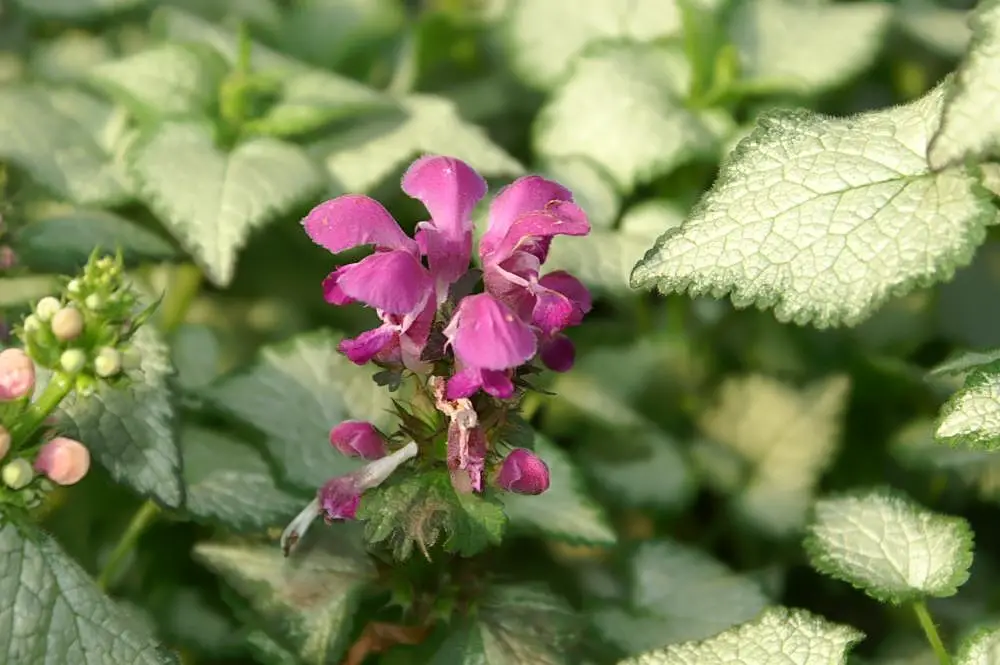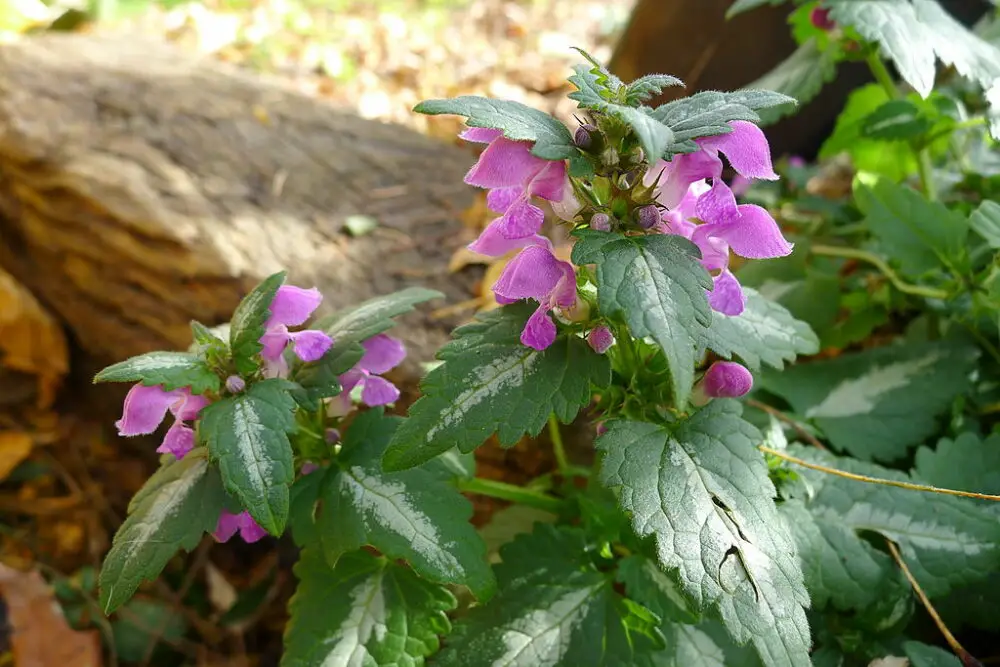This herbaceous perennial has an ominous name but doesn’t present any danger to humans and is edible. It is often used to make tea. In the garden, spotted dead nettle works best as a ground cover or an edging plant.
To keep the plant colorful, you should often prune the green leaves, allowing the bright flowers to be in the spotlight.
Other than that, the plant is quite easy to care for.
Lamium Maculatum Plant Profile and Aliases
From the Lamiaceae family, the most common name for Lamium maculatum is spotted dead nettle.
What Are You Foraging For Right Now?
We're thrilled to hear your ideas. What would you like to submit today? Feel free to share your thoughts and experiences with us.
It is native to Europe, temperate Asia, and North Africa. However, because this plant grows so quickly and easily, it has become popular in many places worldwide.
A few synonyms or common names you’ll hear this plant referred to include:
- Spotted henbit
- Purple dragon
- Beacon silver
- Beedham’s white
- White nancy
- Red nancy
- Pink pewter

Why Is It Called Spotted Dead Nettle?
The common name of this plant might make you think you need to avoid it, but that is not the case.
Lamium maculatum is called spotted dead nettle because the leaf resembles stinging nettle. However, the word “dead” is used in the middle to relay to people that the “stingers” are not active.
How to Identify Lamium Maculatum
Starting with the soil, spotted dead nettle generally prefers moist soil with partial shade or full shade. This plant dislikes humid, hot, tropical weather.
It is usually found in USDA hardiness zones 3-8. It’s not uncommon to find L. maculatum in grasslands, woodlands, roadsides, etc.
This perennial grows flat and close to the ground, between four and eight inches high. Typically, they spread about three feet wide but have been known to spread even further.
The green, heart-shaped hairy leaf blades are sometimes spotted. Each inflorescence has between two and eight hermaphrodite flowers. The stamen of the flower produces orange pollen.
The flowering period is typically between mid-spring and early summer and sometimes until fall. You can expect a color show of flowers anywhere between April to November.
Depending on the climate, you’ll find evergreen leaves, semi-evergreen leaves, or even silver foliage.
In terms of inflorescence, you’ll find hooded white flowers, magenta-pink flowers, or shell-pink flowers.

Is Spotted Dead Nettle Toxic to People or Pets?
A few sources say this plant can be toxic to horses and livestock. However, it is not known to be toxic to humans, birds, cats, or dogs.
It may have a mild laxative effect if humans or animals over-consume the plant.
Deer and rabbits are not attracted to this plant.
Is L. Maculatum Edible?
Spotted dead nettle is edible. It is an excellent source of fiber, iron, bioflavonoids, and vitamins A, C, and K.
It is often used to make tea that may help with allergies, colds, and kidney disease. It is also said to have medicinal properties: boost the immune system, and fight off bacterial infections, internally or externally.
Externally, it may be helpful as a poultice to treat wounds, infections, and cuts.
How to Cook With Spotted Dead Nettle
Before cooking with spotted dead nettle, collect cuttings from the plant and shake them out a few times to ensure there are no ants. After that, wash them and leave them to dry.
A few ways to incorporate them into your diet include:
- Tea – steep the leaves and flowers to make an aromatic tea.
- Pesto – finely chop the leaves and use them as you would use basil.
- Salads – use the leaves raw in salad and use the flower as an edible decoration.
- Green smoothies – treat the leaves (and flowers, if desired) the same as you would use kale or spinach.
- Tempura veggies – batter and fry them for a crunchy snack
- Soups and stews – simmer the leaves with the rest of the ingredients like any other leafy green.
Although Lamium maculatum belongs to the mint family, it does not taste like mint. It has a mildly sweet yet peppery flavor.
Is Lamium Maculatum Invasive?
You must be careful where you plant spotted dead nettle because it is invasive. It covers large areas quickly.
Because it is a perennial ground cover, it will be present year-round. For this reason, foraging this plant is highly encouraged.
Pros and Cons of Planting Spotted Dead Nettle
When deciding which plants are best for your garden, you need to assess your space and consider how the plants will get along.
Some benefits of planting L. maculatum include:
- It is mainly pest and disease-free
- It is deer and rabbit resistant
- It grows well in shady areas
- It has unique silver leaves and beautiful purple flowers
- It can be planted in hanging baskets
- It is easy to propagate
- It is drought-tolerant
On the other hand, a few disadvantages include:
- It attracts bees
- The plant rot if the soil is too wet
- It is considered an invasive weed
If you have the space for the plant, it is a beautiful addition to any garden. If you don’t want to risk it taking over areas that you didn’t plan for, consider growing spotted dead nettle in a hanging basket instead.
Originally from Florida, but with a lust for travel, Sami has found herself in many remote areas with little-to-no access to traditional medicines. Since 2014, she has been experimenting with natural remedies, eastern medicine, and foraging. She believes that the Earth provides us with everything we need to live, heal, and cure.

